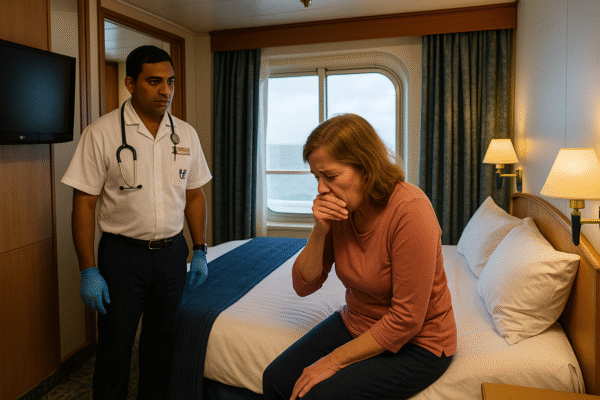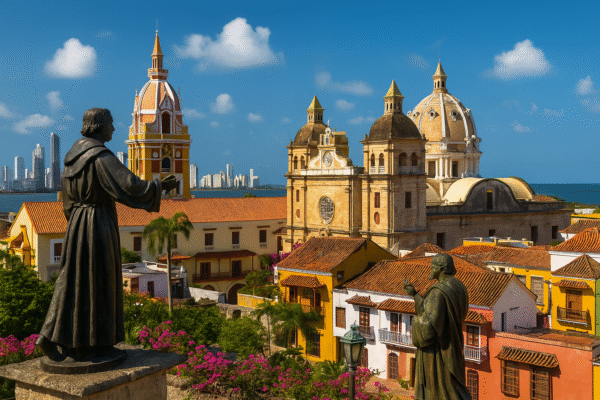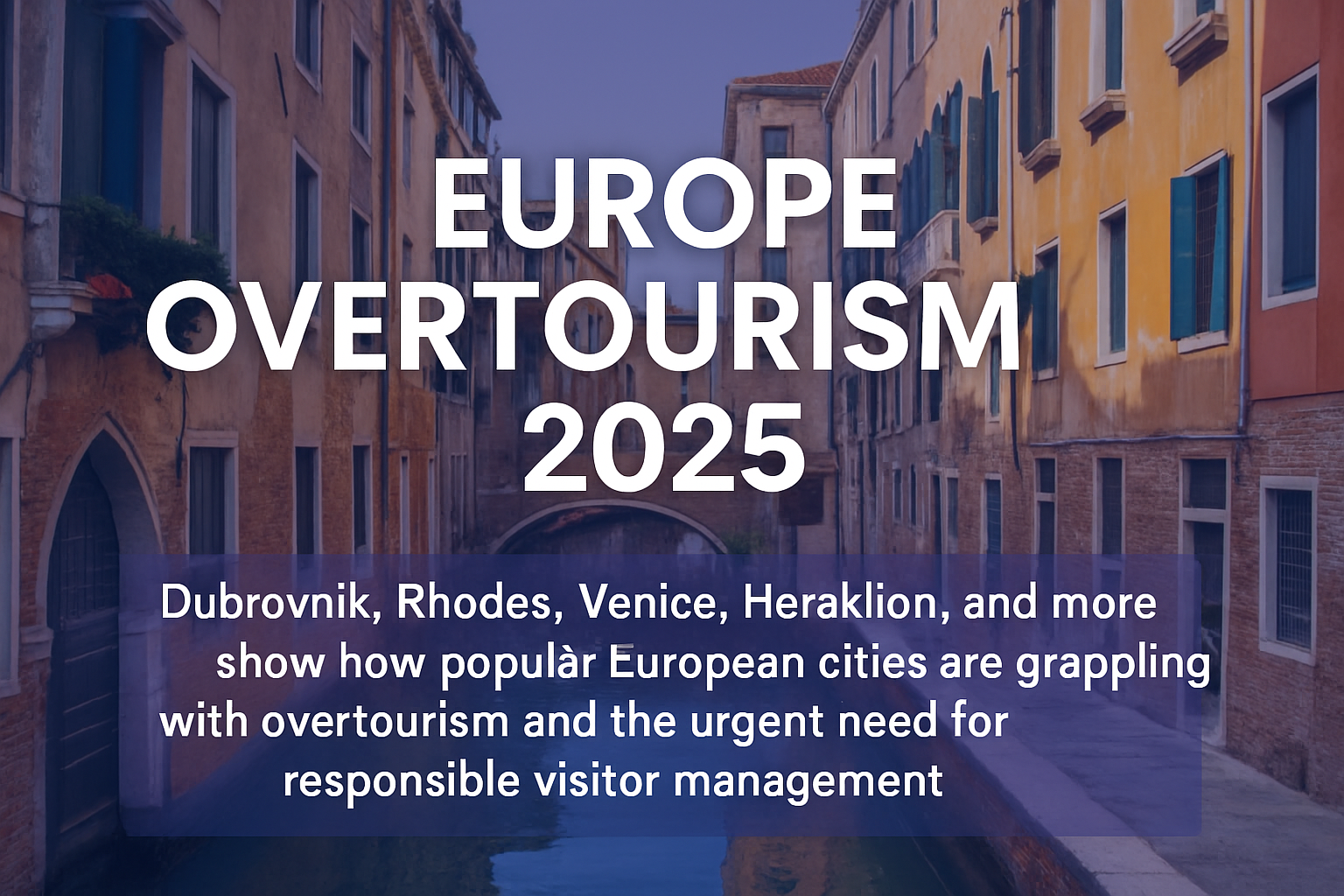Several iconic European destinations, including Dubrovnik, Rhodes, Venice, Heraklion, and Florence, are experiencing record-breaking levels of overtourism in 2025. With tourist numbers now outpacing local populations by alarming margins, cities are implementing urgent visitor management strategies to mitigate the impact on cultural heritage, infrastructure, and local residents.
Dubrovnik Tops Europe’s Overtourism Index
Dubrovnik, Croatia leads the list with a staggering 27 tourists per local resident. The medieval walled city, known for its UNESCO World Heritage status and picturesque Adriatic coastline, has seen a relentless tourism boom since its appearance in global media and pop culture. Once serene cobbled streets are now congested year-round, with cruise ships adding to the daily influx.
In response, Dubrovnik has adopted strict crowd control measures. These include real-time visitor tracking, cruise ship scheduling caps, and seasonal incentives to spread tourist traffic into autumn months such as September and October. Visitors are advised to book accommodations and museum entries well in advance and to consider traveling during off-peak windows.
Rhodes: Mediterranean Appeal Strains Island Resources
Rhodes ranks second with 26 tourists per resident. The Greek island, revered for its medieval Old Town and azure beaches, is struggling to maintain its local charm amidst rising visitor pressure. With growing concerns over water resources, energy usage, and crowding at key attractions, Rhodes is prioritizing sustainable tourism policies.
Planned regulations include limits on cruise ship arrivals, a digital visitor management system for Old Town access, and expanded eco-tourism programs in inland villages. Authorities are also promoting responsible travel education through signage and outreach at ports of entry.
Venice Reinforces Entry Controls and Group Size Limits
Venice, long synonymous with overtourism, is taking further action in 2025. With a ratio of 21 tourists per resident, the Italian canal city is intensifying its entry fee policy during peak seasons. Tourists visiting for the day are now required to pay €5-€10 to enter the historic center, depending on crowd forecasts.
Group size restrictions are being strictly enforced, with loudspeakers and large tour flags now banned. New ferry docking limits and pedestrian zoning in fragile neighborhoods aim to protect both Venice’s heritage and livability. Travelers are urged to explore lesser-known islands such as Burano and Torcello for a more tranquil experience.
Heraklion’s Historic Sites Hit Visitor Thresholds
Crete’s capital Heraklion has emerged as a cultural tourism magnet thanks to the nearby Palace of Knossos. In 2025, with 18 tourists per resident, the city has introduced hourly caps at key archaeological sites. The local government is also working with tour operators to promote sustainable itineraries that emphasize small-group experiences and local partnerships.
Digital ticketing, rerouted tour paths, and incentives for off-season travel are in place to manage peak-time congestion. Heraklion’s hospitality sector is also promoting eco-certified accommodations as part of a wider push toward responsible tourism.
Florence Confronts Art and Architecture Strain
In fifth place, Florence continues to welcome millions eager to experience its Renaissance heritage. With 13 tourists per local, the Tuscan capital is reinforcing protective measures around key attractions such as the Duomo and Uffizi Gallery.
Timed-entry museum systems, expanded pedestrian-only zones, and noise pollution controls are being used to preserve Florence’s ambience. City officials are urging visitors to consider adjacent towns like Fiesole and Lucca to reduce the burden on central Florence.
Athens and Other European Capitals Also Affected
Athens, Greece, ranked 11th in Europe’s overtourism index, faces similar issues with congested sites like the Acropolis. Authorities have introduced digital booking systems and group limits while encouraging early-morning visits. Lisbon, Genoa, and Majorca have likewise begun experimenting with capacity monitoring tools and resident-first urban planning reforms.
Tourism Management as a Continental Priority
This mounting pressure of overtourism across Europe is prompting a unified shift toward responsible tourism. Many cities are now investing in visitor caps, smart tourism platforms, and stricter regulations for short-term rentals. Cultural preservation, community welfare, and environmental stewardship are becoming central pillars of national tourism strategies.
From restructured cruise timetables in Croatia to digital entry systems in Greece and Italy, Europe’s historic cities are taking decisive steps to protect their identities. The European Commission has also encouraged regional cooperation for tourism flow redistribution.
What Travelers Can Do: Responsible Travel Tips for 2025
To support these efforts and enhance their own experiences, travelers are encouraged to:
- Travel during shoulder seasons (April-June, September-November)
- Book guided tours with eco-certified or local providers
- Avoid high-traffic times (midday, weekends)
- Respect local signage and zoning restrictions
- Choose accommodations outside city centers where possible
Conclusion
Dubrovnik, Venice, Rhodes, Heraklion, Florence, and other European tourism capitals are reacting to overtourism. For international travelers—particularly those from the US, Canada, Japan, and India—2025 will require more informed, flexible, and sustainable trip planning.
By adjusting travel behaviors and supporting destination stewardship, tourists can help these cherished cities thrive while safeguarding their cultural and environmental integrity for future generations.
For more travel news like this, keep reading Global Travel Wire


















